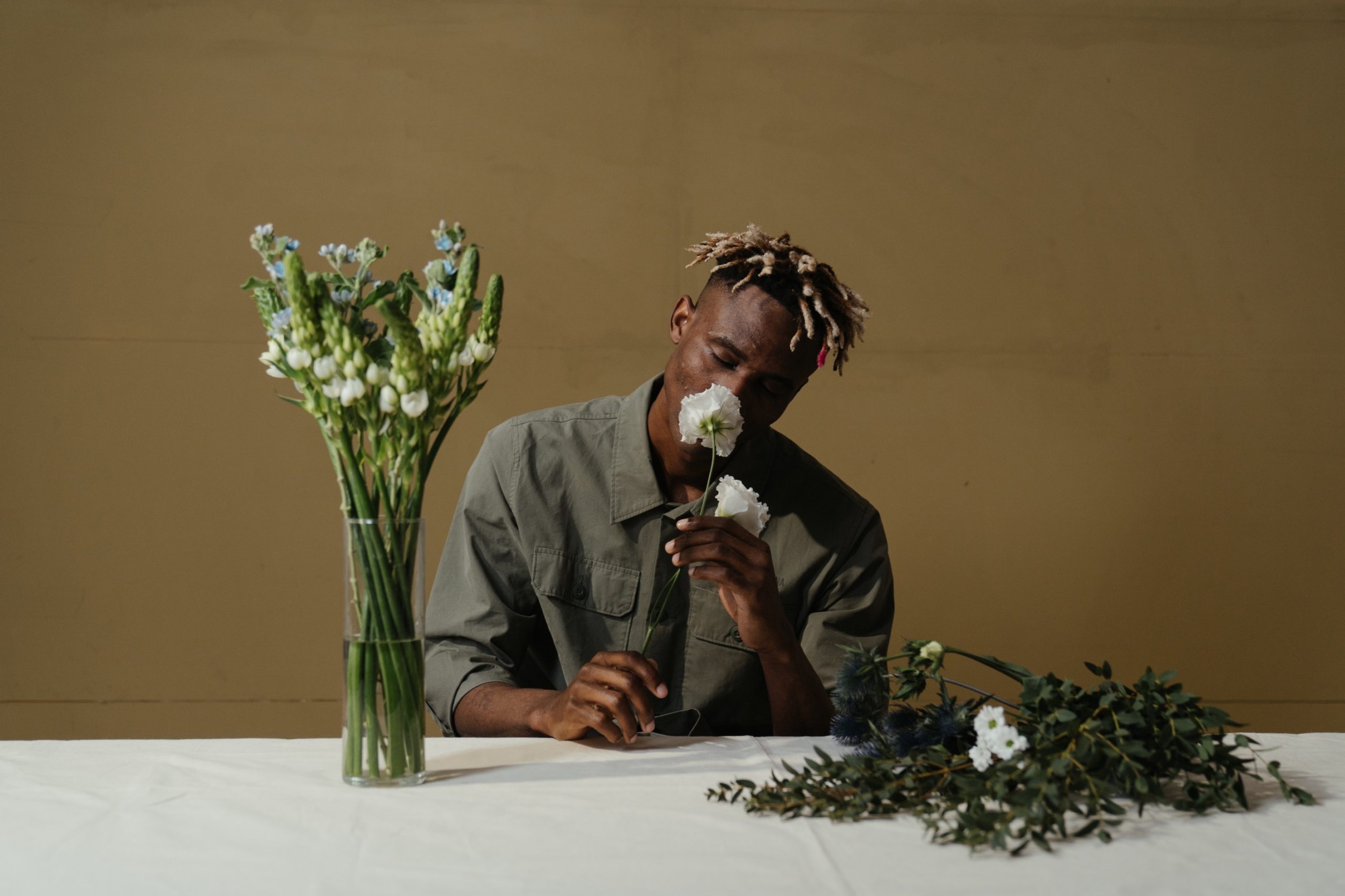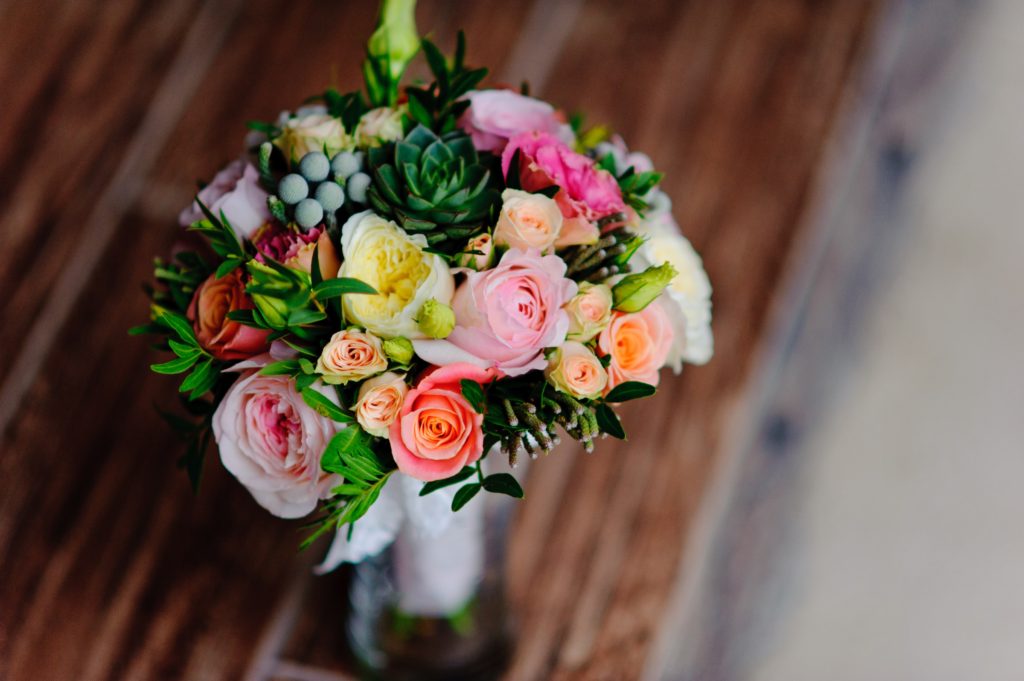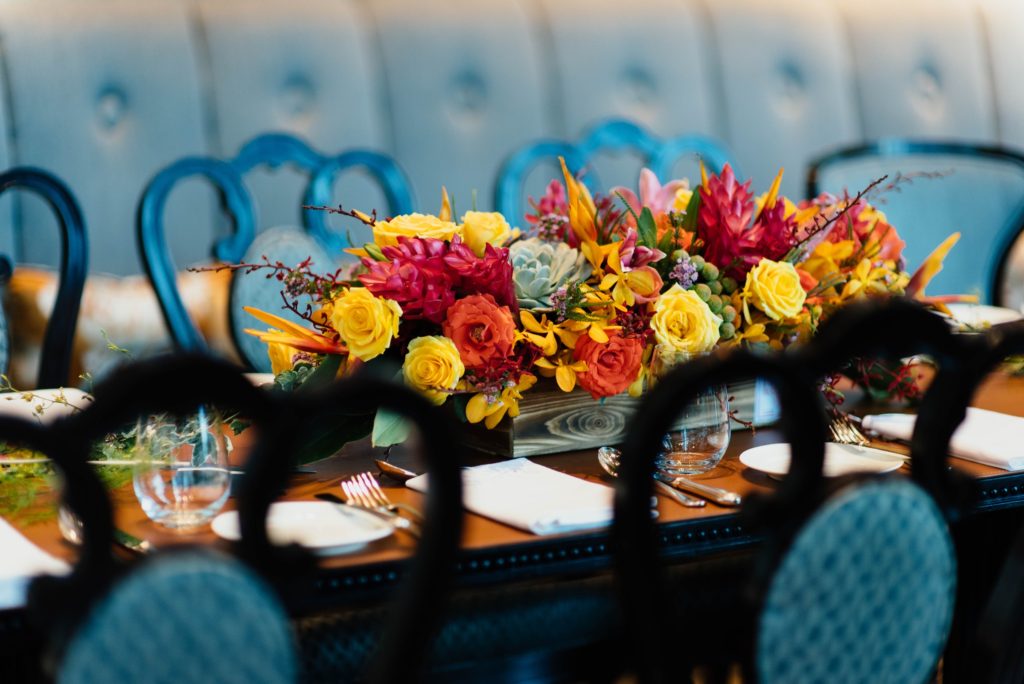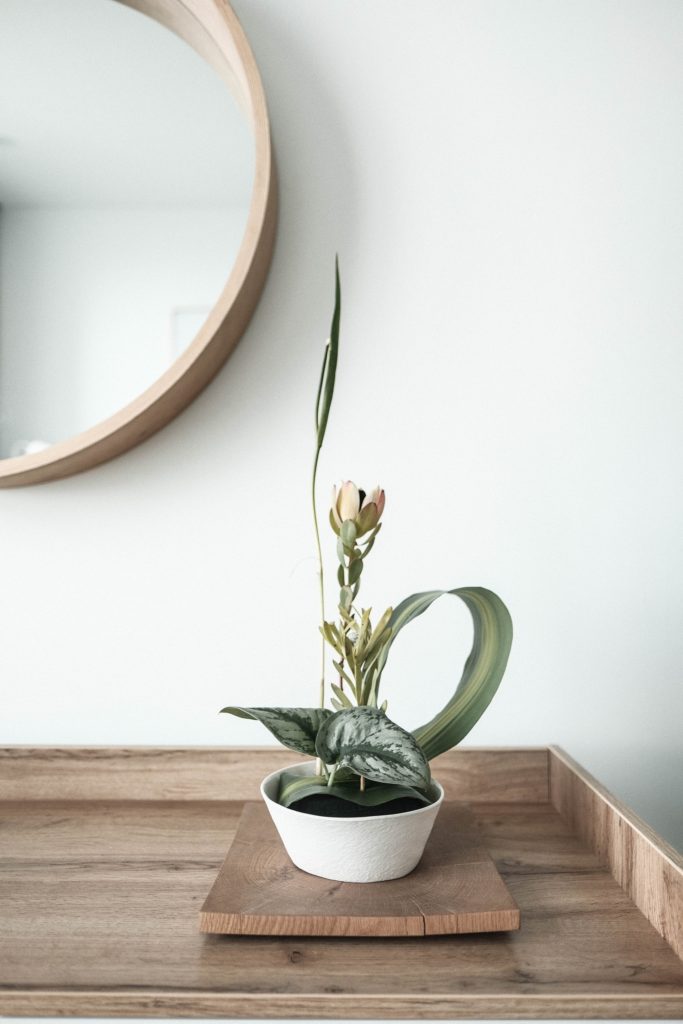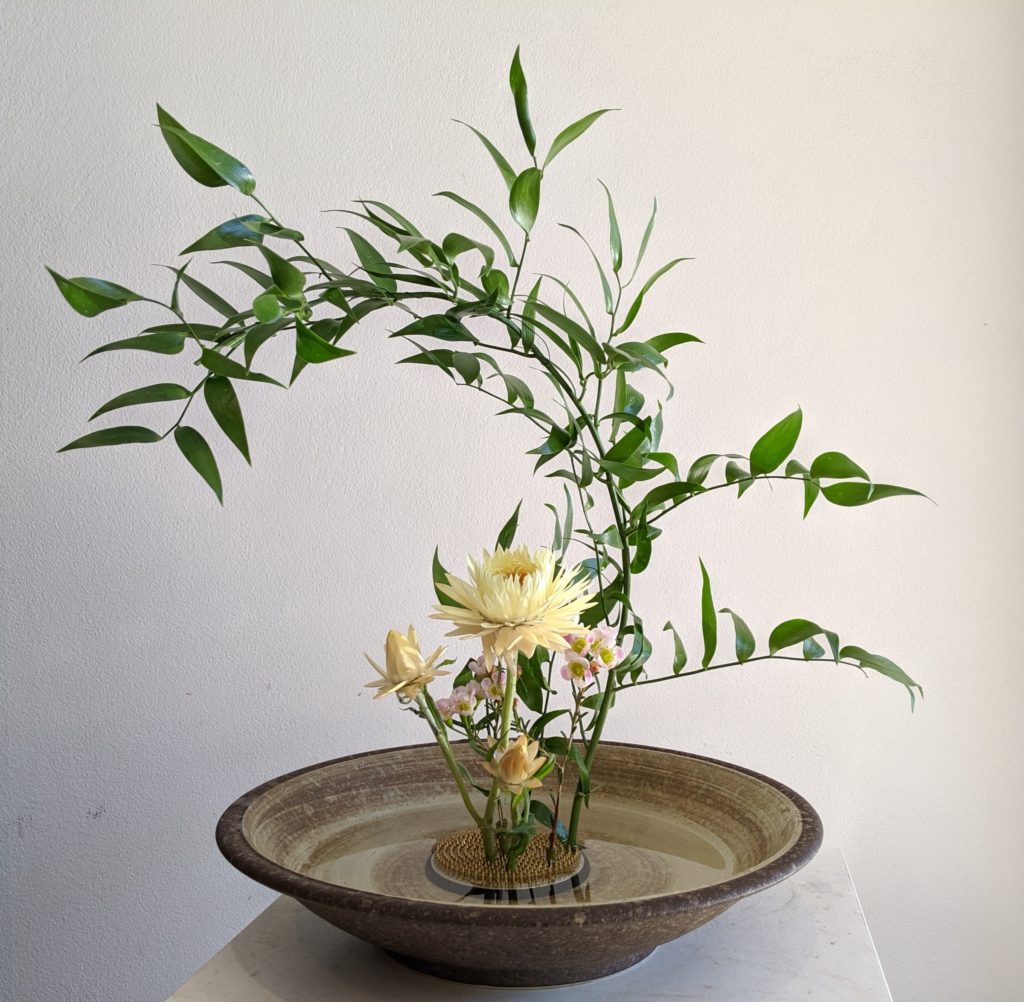Contents
PART 3 – The Art of Ikebana
This is a four-part series on DIY flower arrangements and the mental benefits of floral therapy.
・Part 1 – Introduction to the Power of Flowers
・Part 2 – Floral Healing through Preparation
・Part 3 – The Art of Ikebana
・Part 4 – The Meditative Reflection of Flower Petal Mandalas
Now that we’ve prepared our floral picks according to Part 2, it’s time for the arrangements. Let’s explore different floral arrangements that inspire our creativity and exercise mindfulness.

Ikebana – The Japanese Ancient Floral Art Practice

As mentioned in Part 1, the oldest known book of floral arrangement practice dates back to 1445 in Japan. It persists to this day as a popular activity and highly refined art practice known as ikebana. The word ‘ike-bana‘ embodies the meaning, ‘giving life to flowers,’ and is considered a meditative and creative way to interact with nature. Flower arrangments came into Japan in the 6th century through Buddhism. Initially practiced by Buddhist monks, it evolved to ikebana when philosophies of Shinto (the indigenous religion of Japan) were combined.
The practice is associated with mindfulness, where the active journey of arranging is the lifelong reflective lesson in itself, rather than a sole emphasis on the beautiful outcome. Science also indicates ikebana to be effective in decreasing anxiety and stress-related symptoms while increasing pleasant feelings. Therefore, ikebana has recently been used in floral therapy as Ikebana Therapy. In Japan, flower arrangements are considered a discipline of art in level with paintings and sculptures.
So what makes ikebana different from your usual flower arrangements? There is no simple answer to this as there are many deep philosophical aspects involved, but below are some of the simplified principles they embody.
1. Minimal & Asymmetrical Aesthetics
Western style flower arrangement and ikebana are different in the way they look. Typical familiar flower arrangements might look like the images below. The arrangements are based on the mass impact of the flowers gracefully combined together in a symmetrical form. The lush fullness of the flowers are the main focus of beauty.
On the other hand, below are some examples of ikebana arrangements in comparison. Can you see the difference between the two styles?
Ikebana takes a minimalistic approach that focuses on the beauty of individual materials. Linear compositions form an asymmetrical balance in shape. Open spaces are intentionally preserved as a design choice and an appreciation for negative space. Branches, leaves, grass, moss, and other florals are given the same attention and importance as flower pieces. Today, more than 1000 types of systematized styles exist that govern the form of an ikebana arrangement. These styles are taught through ikebana schools with variations of principles that further demonstrate the connection between artful floral arrangements and Japanese Zen Buddhism philosophy. In ikebana, the process and implied meanings in the arrangements are considered equally important to the visual pleasure of a finished piece.
2. Ephemerality & The Cycles of Life

Ikebana aims to capture the fleeting beauty in life. Floral arrangements are intended to be presented as a concentration of the cosmos. The theological concepts of the life-death cycles in Japanese Zen Buddhism and harmonious acceptance of Shinto come together as one to represent the sensibility it embodies. The floral picks are made based on the seasonal offers of nature and the familiarity of these pieces raises our awareness in seasonal cycles. In other words, the ephemerality of life becomes a closer experience when the cycles of flora blooming and withering throughout the years are directly observed and handled through your bare hands. The lush beautiful arrangements will eventually wither as time passes, and caring for them with love through the different stages until the end, teaches you to accept all circumstances of life, the good and bad.
3. Mindfulness & Appreciation

One of the main rules of discipline in ikebana is to arrange in silence. This allows a person to be present in the moment and hold deep internal conversations with the floral pieces, observing them with a heightened sense of look, touch, smell, and sound. This is why ikebana is considered a meditative practice associated with mindfulness. All floras, regardless of its unique shapes and imperfections, are embraced as a unique characteristic that positively contributes to the overall styling aesthetics. This is considered a gesture that teaches us how to accept and beautify our indifferences between others. Paying respect and humanizing each individual floral is believed to nurture our understanding of every single life coexisting in this world as precious. Using the act of arrangement as a tool, ikebana guides us through the philosophies of life and a deep exploration inwards. A clear focus on the fragrance, physical connection, harmony, and ephemerality leads us to a state of tranquility and a sense of gratitude.

DIY: How to Try Ikebana at Home
Materials: Seasonal florals, scissors, and a vase filled with water.
- Prepare florals that reflect the current season. An odd number of florals with different lengths are preferred in order to avoid symmetry in shape. Cut your florals with scissors to create the different lengths as necessary.
- Look at examples online. There are many creative ikebana images available on the internet as a good source of inspiration.
- Before you start arranging, quietly touch each of your materials in silence to form a connection. Think of how you would like to structure your arrangements. Below are some concepts you can use as a guide.
・Most ikebana styles have three layers of heights metaphorically expressing heaven, human, and earth. ‘Earth’ is the lowest layer close to the mouth of the vase. ‘Human’ is the middle layer, and ‘heaven’ is the highest length layer stretching away from ‘earth’. Hold each of your floral and reflect on the story you want to convey in your ‘cosmos’ of life.
・Different states of a blossom tell a story of time; the past, present, and future. Different materials are used to indicate each state of time. To represent the past use full blooms, blossom pods, or dried flora. For the present, use half-open blossoms or perfectly formed leaves. The Future is expressed through buds, suggesting future growth and development. - Using the aforementioned ideas, start arranging in silence. Make sure your arrangements are made with an emphasis in line, shape, and asymmetrical forms. Imagine that you are making a 3D sculpture as opposed to just grouping things together.
- Don’t be afraid of empty spaces! Try to embrace the negative space rather than filling them up. Ikebana is all about hinting beauty through minimal and hidden expressions. Opt into changing a look drastically by making small tweaks in the placement and angles of each piece. The small tweaks become highly effective the simpler the arrangement is.
- After you finish, find a de-cluttered place to display and enjoy the simple beauty of it. Changes to the plants will occur throughout the displayed duration and this can be observed as an additional appreciation.

Continuous Practice & Viewing Benefits of Ikebana
Long term practice of Ikebana is proven good for our well-being. Researchers of ‘occupations that contribute to physical and mental wellness’ have concluded ikebana to be a meaningful, engaging, and positive activity in the long run. Practitioners that averaged 14 years of experience all claimed ikebana to be transformative; leading to richer lives, personal growth, and harmony in life. Many mentioned that ikebana helped with stress, difficulties in life, and ease in pain, attesting their recognition to the health and mental benefits over time.
Simply displaying ikebana has a positive effect too! In a 2011 experiment, scientists checked the anxiety and respiratory responses in people who viewed ikebana. Just even a picture of an arrangement slowed down respiratory response with people who had high anxiety. If a picture is as effective, why not share your creation with others as well?
In Part 4 coming up next, I will introduce The Meditative Reflection of Flower Petal Mandalas, which is another creative arrangement that doesn’t require a vase, and even more ephemeral in existence.
→ Looking to improve your mental health? Try the SELF MIND app FREE for 1 week!
If you’re looking for more tips on how to care for your mental health, check out some of our past blog posts!

